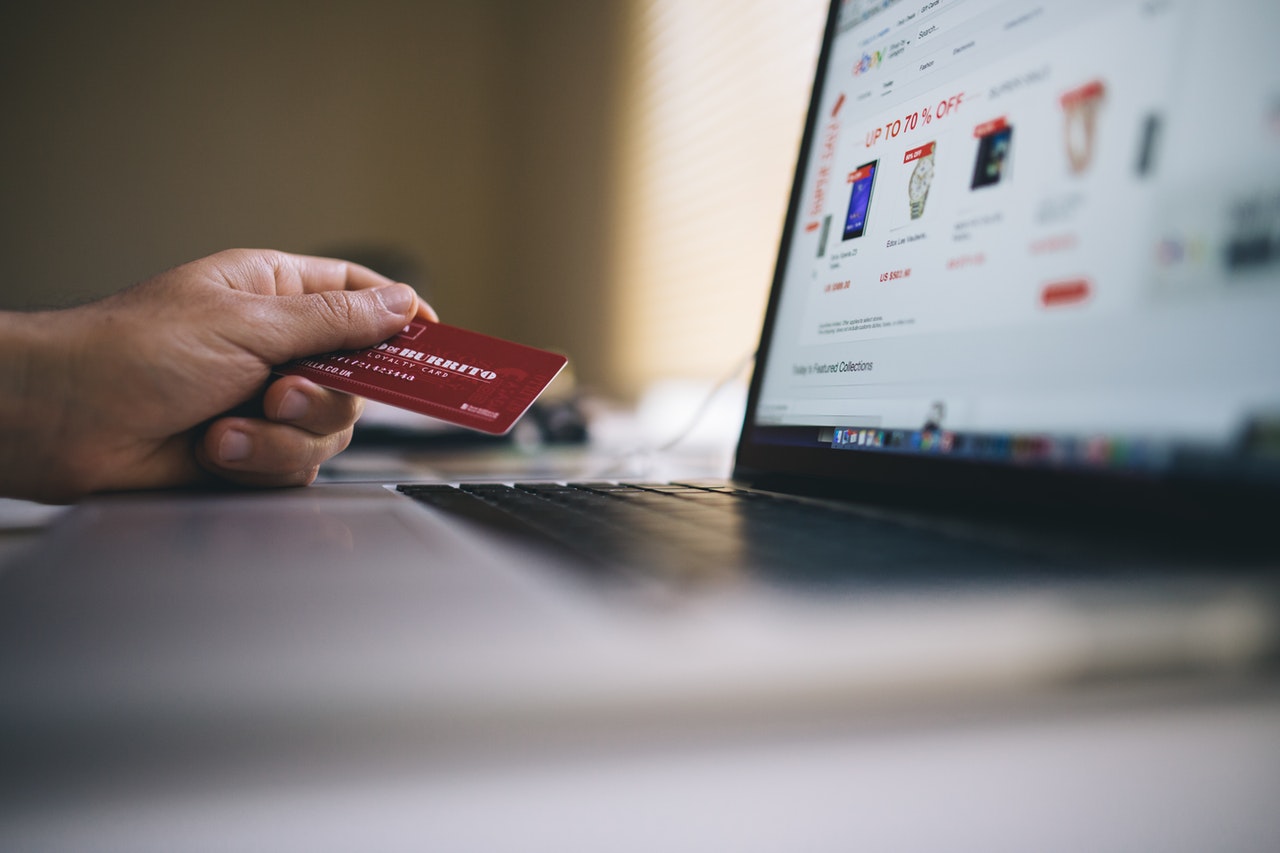15 Actionable Ways to Optimize Your Store’s Pages for More Sales
March 26, 2021 - 12 minutes readA guide to increasing conversions on your ecommerce website.

As the digital age continues to flourish and more consumers are researching and buying products online, there is more opportunity in eCommerce and online retail than ever before.
To date, 93.5% of global Web users have bought products online. Plus, the value of the eCommerce industry stands at $3.53 trillion.
But, while there has never been a better time to sell your products or services online, the competition is fierce. To stand out in your niche and become a glistening needle in that giant digital haystack, optimizing your store’s homepage, category pages, and product pages is essential.
Here, we’re going to look at why optimizing your online store matters, what to consider, and how to do it.
Why optimizing your online store matters
Improving the way your online store’s pages look and how they’re structured will have a significant impact on your search engine rankings, as well as how much traffic you drive to your website.
Using a mix of practical on-page search engine optimization (SEO) techniques, copywriting methods, and promotional tactics, you can boost your brand’s reach, place yourself in front of the right audience, and convert more customers.
Fifty-seven percent of leading marketing executives state that on-page content development is the most powerful optimization tactic.
Investing time and resources in improving your store’s pages will help you get noticed by the right consumers consistently while gaining an all-important edge on the competition.
The 15 essential web store page optimization tips
Now that you understand the importance of optimizing your online store’s pages, let’s look at some actionable ways you can make it happen.
1) Make a wireframe
Wireframing is the process of creating a skeletal outline for your store’s webpages, either by hand-drawing diagrams or using digital design or sketching tools.
The reason wireframing is so effective is that it allows you to map out a web page’s design visually while establishing a layout that will make it as easy as possible for your users to navigate. In turn, you will improve your pages’ user experience, improving your search engine rankings while earning more conversions.
There are plenty of online tools to help you make wireframes for your store’s pages. This guide will also help you get started:
2) Create an XML sitemap
XML sitemaps make it simpler for search engines like Google to crawl your store’s pages. Creating a sitemap will boost the chances of your pages ranking for the right search terms in your niche, which will cause your traffic to skyrocket. The good news is, you don’t need technical skills to create an XML sitemap— a generator will do most of the work for you.
3) Make your pages mobile-friendly
Today, there are more mobile devices on the planet than humans. In an age where most consumers research products and make purchases using a smartphone or tablet, having every single page on your page optimized for the mobile experience is vital. If you don’t mobile-optimize your store’s pages, your web traffic will dwindle, and your brand reputation will suffer.
There are tools you can use to ensure your eCommerce store’s pages work seamlessly on mobile devices (and many store builders or content management systems like ours automatically mobile-optimize your page content). Alternatively, you can work alongside a web developer.
4) Improve your title tags & meta descriptions
Your metadata and title tags are the snippets of text that appear in search engine results pages (SERPS):
This is an excellent example of title tag and metadata creation from Tripadvisor (based on the search term “best bars in San Francisco”).
Here’s why:
- The relevant keyword or key term is featured near the start of both the title tag and meta description.
- The content is clear, conversational, and descriptive.
- There is a call to action (CTA) included at the end of the meta description to entice people to click-through and view.
Your title tag and meta description play a role in boosting your SEO rankings. But even more importantly, they advertise your store page content. Follow the three best practices above, and you will see an increase in web traffic.
5) Add “descriptive” imagery
Consumers respond incredibly well to visual content. Here are a few tips to help you attract more traffic and earn more conversions with your imagery:
- Add descriptive “alt tags” to all of your images with keywords relevant to your page content. This will help you appear in more Google visual searches.
- Condense your image files and make sure they fit the page appropriately. This will make your pages look and feel better and improve your page’s loading performance (we’ll talk more about this later).
- Always make sure that your images are bright and striking but don’t hinder your page’s navigation or get in the way of important info or messaging. Doing so will have a negative impact on web traffic and conversion rates.
- Sixty-eight percent of top marketers say that video content offers a better return on investment than Google Ads. Invest in branded video content and add it to your store’s pages where possible—it will improve your reputation, boosting your website traffic and sales in the process.
Check out our step-by-step guide to creating a branded video that customers will actually want to watch for tips and advice.
6) Get your keywords right
We’ve talked about adding the right keywords to your page content as well as title tags and meta descriptions. Here are a few top tips to help you get the very best from your keyword research as an online retail business owner:
- Sign up for a keyword planner tool. We recommend Google’s Keyword Planner tool (MOZ and Ubersuggest are also effective).
- When you’re looking to create or update content for a specific piece of page content, consider the theme, aim, or product and type in two to three relevant key terms. For example, if you’re selling a GoPro, you might type in “GoPros for sale” and “GoPros online.”
- Once your tool returns a list of relevant key terms, make a shortlist of around four or five with “medium” to “low” traffic competition and reasonable monthly search numbers (this will help you broaden your presence on search engines by ranking better for a variety of terms with less direct competition).
- Choose a primary and secondary key term from your shortlist. Weave these into your page’s title tag, meta description, page headers, and copy both sparingly and naturally. If you stuff keywords into your page for the sake of it, your search rankings and web traffic rates will suffer.
7) Go local with your content
Eighty percent of Google searches are local. This means that if you make a portion of your store’s webpages locally-focused (with geographically-specific keywords and content, including product and area guides), you will drive more traffic to your site.
If you want to win with local content, check out our essential guide to offbeat local marketing strategies.
8) Power-up your pages’ loading performance
A mere one-second page loading delay can reduce page views by 11%. If you want to keep driving traffic to your store pages, maintaining an optimum loading performance is essential.
Keep your page loading performance tip-top by using page performance analysis tools and going through the backend of your sites, removing any redundant or unnecessary code, images, or files. Get a web developer to help you if required.
Now that we’ve covered the core page optimization methods, here are seven more quick-fire tips that will lead you to eCommerce and retail success:
9) Make sure your product descriptions are personable and value-driven.
10) Sign up for a Google Merchant Center account.
11) Add deals, discounts, and offers to your store’s pages and plug them via social media.
12) Use online chat widgets, services, and transcripts.
13) Build trust with on-page testimonials and product reviews.
14) Try native advertising to increase your brand visibility.
15) Test. Test. Test. Analyze your store’s stats and data regularly and run A/B tests of specific store pages to see which version performs the best.
Final Thoughts
As you can see, there are several ways to optimize your store pages to attract more web traffic and drive more conversions.
By being consistent and using a balanced mix of these achievable strategies, you will accelerate your business growth and gain an all-important edge over the competition.
The most effective way to roll out page optimization strategies is by working with the right platform. Our optimized ecommerce store website templates store will help you quickly build an optimized ecommerce store.
If you want to find out more about our services and solutions, get in touch. We look forward to hearing from you.
